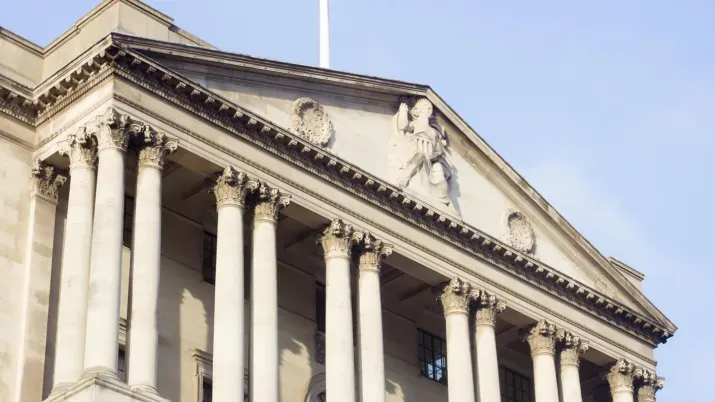Flash Fixed Income: Rates calm before the storm?
TwentyFour
Key takeaways
- Absent tariff risks, we think the Fed would likely have cut rates in June, highlighting the stark difference between the US and European monetary policy environments.
- Government bond volatility, a dominant theme of 2025, has declined in June and recent data suggests the narrative around weak foreign demand for US Treasuries (USTs) may be overblown.
- Softer US economic data means the pressures on UST yields look more balanced, but headlines around President Trump’s pick for the next Fed chair are just one reason we believe investors should expect rates volatility to continue.
The overriding message from the recent round of central bank meetings has been one of uncertainty around tariffs, with central banks clearly unable to accurately forecast the final shape of US policy and its impact on their own specific economies.
The Federal Reserve (Fed) and the European Central Bank (ECB) in particular are interesting because they now both appear to be in “wait and see” mode, although for the ECB that has come after a number of cuts this year. The Fed chair, Jerome Powell, highlighted in his press conference on June 18 the current difficulty with making predictions, saying that there are a range of scenarios for both inflation and the labour market and that policymakers need to be “humble” about their ability to forecast them.
The updated “dot plots” showed Fed members are still pencilling in two cuts for 2025, the same as at the March meeting, though the details showed some dispersion across the committee with seven members’ dots indicating zero cuts and 10 indicating two or more. Compared to the last Summary of Economic Projections (SEP) in March, committee members are forecasting higher unemployment (rising to 4.5% this year), lower real GDP (1.4%) and higher core Personal Consumption Expenditures (PCE) inflation (3%).
This, as we have discussed many times before, puts the Fed in a tricky spot, and the message from Powell and crew remains one of patience. Absent the tariff risks, we think the Fed would have cut at the June meeting given the underlying inflation picture in the US continues to show progress towards its target, with Consumer Price Index (CPI) inflation for May coming in below consensus for the fourth month in a row.
Less pressure on the ECB
At the ECB, president Christine Lagarde told a similar story of being in a good place to deal with the tariff impact in the coming few months, though the tone was very different to the Fed’s. Having reduced its deposit rate to 2% (right in line with its estimated neutral rate), the ECB surprised the market a touch by pushing back on the need for further cuts. Contrary to the Fed, which it seems would like to cut but can’t, it seems the ECB could cut but doesn’t see the need because it is ultimately expecting a minimal impact to growth from tariffs. The ECB staff forecasts have real GDP growth at 0.9% for 2025, the same as in the March projections, while they have both headline and core CPI coming in below the 2% target in 2026. Lagarde has highlighted in the past the potential disinflationary impacts from tariffs as Asian supply is shipped into Europe rather than the US. This highlights the difference between the two economies at the moment.
June’s central bank meetings also brought notable moves elsewhere in Europe. The Swiss National Bank (SNB) cut its policy rate back to zero for the first time since September 2022 with a sixth consecutive cut, as president Martin Schlegel highlighted the disinflationary pressure of the country’s strengthening currency; Swiss headline inflation returned to deflation in May, coming in at -0.1%.
While the SNB was expected to cut, Norway’s Norges Bank was not, with none of the economists surveyed by Bloomberg expecting its 25bp deposit rate cut (to 4.25%) on June 19. While this was the central bank’s first cut since rates peaked in December 2023, governor Ida Wolden Bache indicated that the inflation path has eased somewhat since the beginning of the year and that if the economy evolves as expected, the market can expect further cuts in 2025.
Calm in rates about more than tariffs
Government bond volatility, which has been a dominant theme of fixed income markets in 2025, has declined in June thanks partly to a relative lack of “new news” on tariffs. The MOVE index, which tracks implied volatility in the US Treasury (UST) market, is back to levels seen in March (see Exhibit 1), and the trading range of 10-year UST yields month-to-date is the narrowest of any month so far this year.
There are reasons for this other than the lack of tariff headlines.
First, the fiscal narrative has softened somewhat now we know the adjustments the Senate have planned for President Trump’s “Big Beautiful Bill”. While we expect the deficit will continue to weigh on USTs as a negative technical pressure in the coming years, we don’t expect the Treasury Department to start increasing coupon supply until next year. According to projections, if you include the tariff revenue the bill itself is unlikely to increase the deficit (from a still too-high in our view 6.5%), while the now infamous Section 899 was delayed in the revised bill and there was no inclusion of Senator Ted Cruz’s suggestion to stop paying interest on bank reserves – a move we think would be highly disruptive to the banking sector in the US.
Second, another narrative has been around foreign investors “de-dollarising” and dumping their US government bond holdings, but the data shows this trend might be overblown. Treasury International Capital (TIC) data published June 18 on UST flows for April, when the volatility was most acute, did show a net sale of USTs from foreign private holders. However, this was mainly driven by Canadian holders who were still net buyers of USTs year-to-date, and the data also showed a net purchase of USTs in April from foreign official holders (central banks). Auction demand has largely confirmed this too, with even longer dated auctions going well in recent weeks.
Finally, we have seen a clear softening in economic data for the US, so we would argue the pressures on UST yields are likely to be more balanced as we move through the summer. That said, we expect volatility to continue. Notwithstanding the tensions in the Middle East, which so far have drawn a benign reaction in developed market risk and risk-off markets, President Trump has signalled he could soon announce who the next Fed chair is going to be. While Kevin Warsh has looked a likely candidate for some time, recent headlines have suggested the Treasury Secretary, Scott Bessent, could be chosen. On the face of it, Bessent would seem the more likely pick given that based on recent interviews with both, we would expect him to be significantly more dovish than the former Fed governor. However, this would raise the question of who would replace Bessent, and it is the Treasury Secretary’s voice that has been most influential in soothing market nerves around the tariff policy in recent months.
Credit the sweet spot
Against the backdrop of macro uncertainty, credit volatility has remained subdued. Given the relatively small impact of tariffs on the growth outlook in Europe, we see the fundamental impact on the European corporate sector being equally limited, which means we continue to see Europe as the most attractive market for credit exposure. While spreads have been trading in a tight range (and at tight levels), carry remains your friend, offering both good downside breakeven mitigation and an attractive level of income. Ultimately we think credit, and in particular higher quality credit, remains the sweet spot within fixed income.
Important Information: The views expressed represent the opinions of TwentyFour as at 20 June 2025, they may change, and may also not be shared by other members of the Vontobel Group.
This article does NOT express any political views or endorsements, but rather aims to objectively analyse the economic factors and implications. The analysis is based on publicly available information as of the date above and is for informational purposes only and should not be construed as investment advice or a personal recommendation.
Any projections, forecasts or estimates contained herein are based on a variety of estimates and assumptions. Market expectations and forward-looking statements are opinion, they are not guaranteed and are subject to change. There can be no assurance that estimates or assumptions regarding future financial performance of countries, markets and/or investments will prove accurate, and actual results may differ materially. The inclusion of projections or forecasts should not be regarded as an indication that TwentyFour or Vontobel considers the projections or forecasts to be reliable predictors of future events, and they should not be relied upon as such. We reserve the right to make changes and corrections to the information and opinions expressed herein at any time, without notice.
Past performance is not a guarantee of future results. Investing involves risk, including possible loss of principal. Value and income received are not guaranteed and one may get back less than originally invested. TwentyFour, its affiliates and the individuals associated therewith may (in various capacities) have positions or deal in securities (or related derivatives) identical or similar to those described herein.








